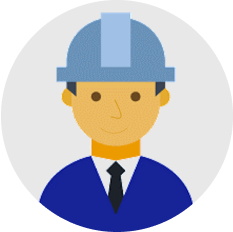How I used thorough user-centered research for
designing data-rich dashboard
2023
Enterprise Solutions
Optimizing Energy Efficiency:
The Role-Based Dashboard

Overview
OpenBlue CUP apps help customers reduce utility costs, decarbonize their buildings, secure incentives, and improve uptime for mission-critical cooling, heating, and cogeneration plants using predictive real-time control with machine learning and physics-based models. It serves diverse clients across various industries and climate zones, optimizing heating and cooling systems for over 50 clients in the US and internationally.
-
Children’s of Alabama (Hospital)
-
Kent State University (Higher Education)
-
Derwent London (Real Estate)
-
Stanford University Central Energy Facility (Higher Education)
-
Grosvenor Place - Sydney, Australia (Real Estate)
Duration: 2023
Goal: Redesign the legacy Dashboard of the Plant Optimizer based on user-centered research to accommodate diverse user personas.
My Role: Senior UX Designer
Team: Me, Senior UX Researcher, Junior Designer, Product Managers, Engineering Team

Plant Operator
Optimize equipment staging, setpoints, and maintenance scheduling to maximize efficiency and minimize downtime.

Facilities Associate VP
Train new plant operators, meet energy mandates, maximize infrastructure capacity, plan for growth, and make design decisions.

Energy and Sustainability Manager
Facilitate facilities in achieving energy goals with ROI by preparing reports, estimating savings for retrofits, measuring energy savings, and analyzing utility rates.
Challenges
The Central Utility Plant, a critical component of Johnson Controls' software suite, is utilized by multiple customers across various industries such as hospitals, universities, airports, data centers, and industrial businesses. However, the current operator's dashboard needs to adequately reflect the diversity of industries and cater to multiple personas.
Three Research Phases
The research process consisted of three phases: internal research, discovery research, and evaluative research per persona (Operator-focused, Supervisor/Energy Engineer-focused). Interviews with internal users and heuristic analysis revealed distinct problems, and high-quality data convinced the team to proceed with the project. Once the design mockups were prepared, the team conducted evaluative research with both existing and potential customers. This involved concept testing and usability testing combined.
Phase 1
Internal Research
June 1 - July 10, 3 weeks for Research
-
Stakeholder Interviews
-
Heuristic Evaluation
-
OpenBlue North Star Research Review
-
Identify and deploy immediate enhancements to enhance usability and functionality on the landing page.
-
Develop hypotheses regarding longer-term enhancements to enhance usability and functionality on the page, integrating these hypotheses into subsequent research phases.
Phase 2
Discovery Research
July 11 - Sep 1, 2 months for Research and Design
-
User Interviews
-
Begin to inform a new truly user-centered redesign by understanding what would be most useful and valuable to users.
Phase 3
Evaluative Research
Sep 4 - Oct 16, 1.5 months for Research and Design
-
Concept Testing
Usability Testing
-
Evaluate the new conceptual design with users to validate progress toward creating a more beneficial solution for operators.
-
Assess the usability of the new design to confirm that operators can proficiently and satisfactorily accomplish their essential tasks from the landing page.
Evaluative Research Process
Through the evaluative research process, the UX team conducted comprehensive assessments utilizing both concept testing and usability testing methodologies. Concept testing allowed for the validation of initial program ideas and objectives, ensuring alignment with user needs and expectations. Subsequently, usability testing with real users provided invaluable insights into the practicality and effectiveness of the program, facilitating iterative improvements to enhance user experience and overall functionality. Integrating these approaches facilitated a holistic evaluation, leading to informed decision-making and refinement of the program's design and implementation strategies.



Final Dashboard Design
Tailored to personas and customized for individual requirements. The issue lies in various roles seeing the same dashboard. Thus, tailoring widget information to each target user's role is critical in this project. Additionally, the combination of cards is important. While the operator may not be interested in the ROI widget, the supervisor or energy manager wants the operator to care about their goals and interests.





Tailoring Insights within the Same Dataset
How to represent or combine it with other datasets for each persona's interest; the chart information is crucial for each persona. This example demonstrates how deeply the UX team delved into understanding each persona's needs and visualizing the best dataset combinations with various visualizations.

Supervisor-Focused
Unlocking Operational Potential:
The Cost-Saving Case for Embracing Auto Mode
These data plots serve as compelling evidence, reinforcing the argument that operators are squandering financial resources by neglecting the adoption of Auto Mode. It illuminates a clear pattern of inefficiency, highlighting the potential savings and operational enhancements that could be realized if operators embraced automated processes.

This stacked bar chart helps operators identify energy-saving modes by combining mode variations with electricity usage data grouped by Auto and Advisory mode.

This scatter chart aids supervisors in identifying cost-effective modes. The chart illustrates that the Auto mode is more efficient during higher loads (>1500).

Outcomes & Insights
User-Centric Research Drives Business Development
Collaborating with a senior UX researcher and a UX designer, we undertook a comprehensive research process spanning three phases. Over a six-month period, we iteratively developed various mockups, refining functionality to better align with user needs. Through meticulous research, our team successfully persuaded decision-makers to prioritize business development initiatives.
Tailoring Dashboard Widgets to Suit Varied Roles
Different roles require distinct widgets on the dashboard, yet categorizing widgets per persona isn't a straightforward binary process. User interviews revealed diverse, role-specific needs that significantly influence task execution. For example, while a plant operator focuses on enhancing building comfort, a supervisor emphasizes ROI and energy efficiency, expecting the operator to also prioritize energy efficiency.
Persona-Driven Data Visualization
Each user persona seeks to interpret the same dataset in different formats. The system offers both automatic and manual operation modes. Supervisors assess the system's value by analyzing the ratio of automated operations, while operators strive to identify the most efficient mode per hour or season for optimal configuration.
Operator-Focused
Enhancing Operator Efficiency:
Analyzing Mode Shifts for Swift Issue Identification and Workflow Optimization
These data plots pinpoint key moments when operators shift from Auto to Advisory mode, offering valuable insights into the reasons behind these transitions. This helps operators swiftly identify issues, enhancing their ability to troubleshoot effectively and optimize their workflow.

These plots combine mode variations with audit logs, helping users pinpoint reasons for mode changes.

These plots combine mode variations with audit logs, helping users pinpoint reasons for mode changes.
Phase 1
Internal Research
Research
-
Stakeholder Interviews
-
Heuristic Evaluation
-
OpenBlue North Star Research Review
Phase 2
Discovery Research
Research and Design
-
User Interviews
Phase 3
Evaluative Research
Research and Design
-
Concept Testing
-
Usability Testing